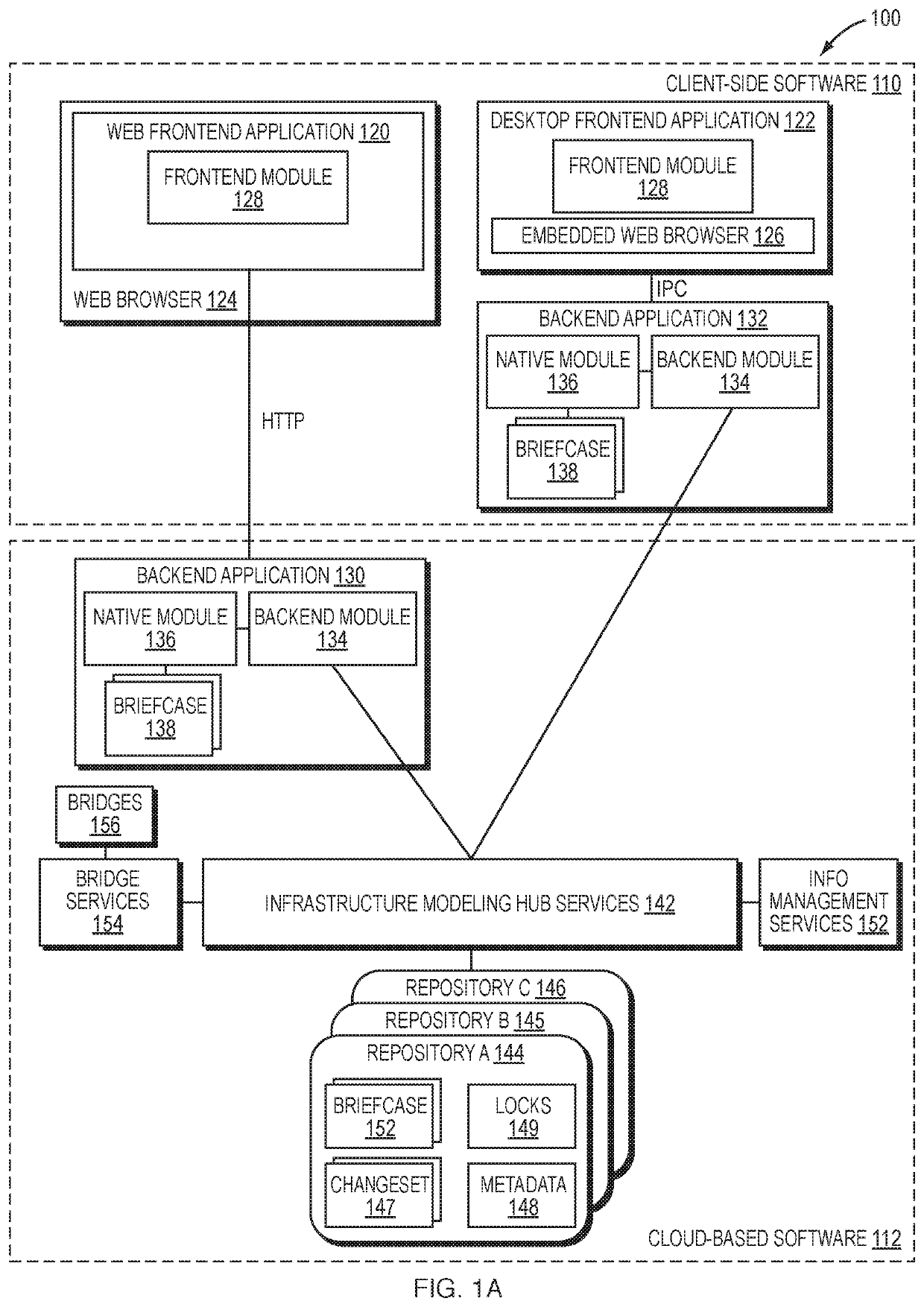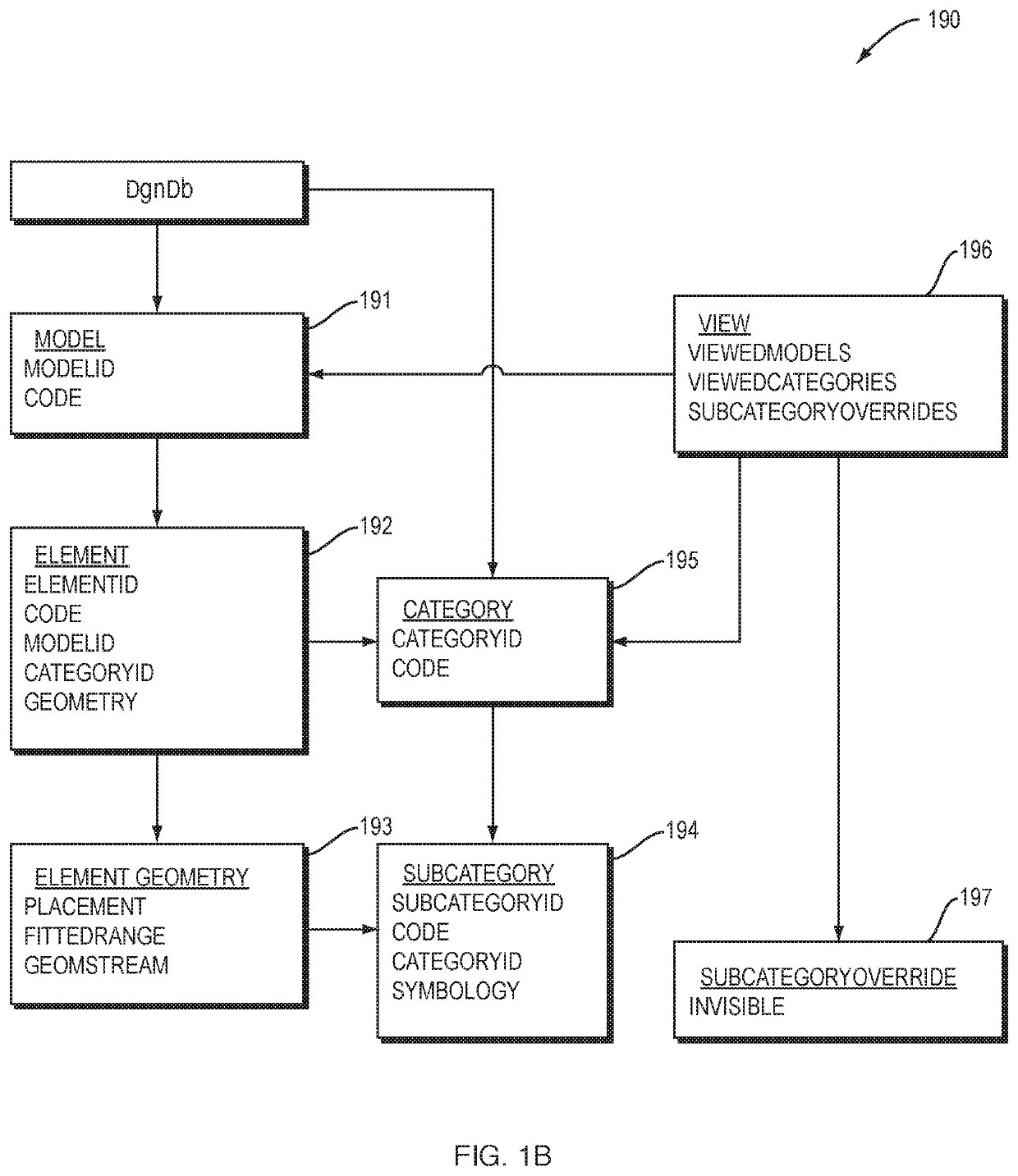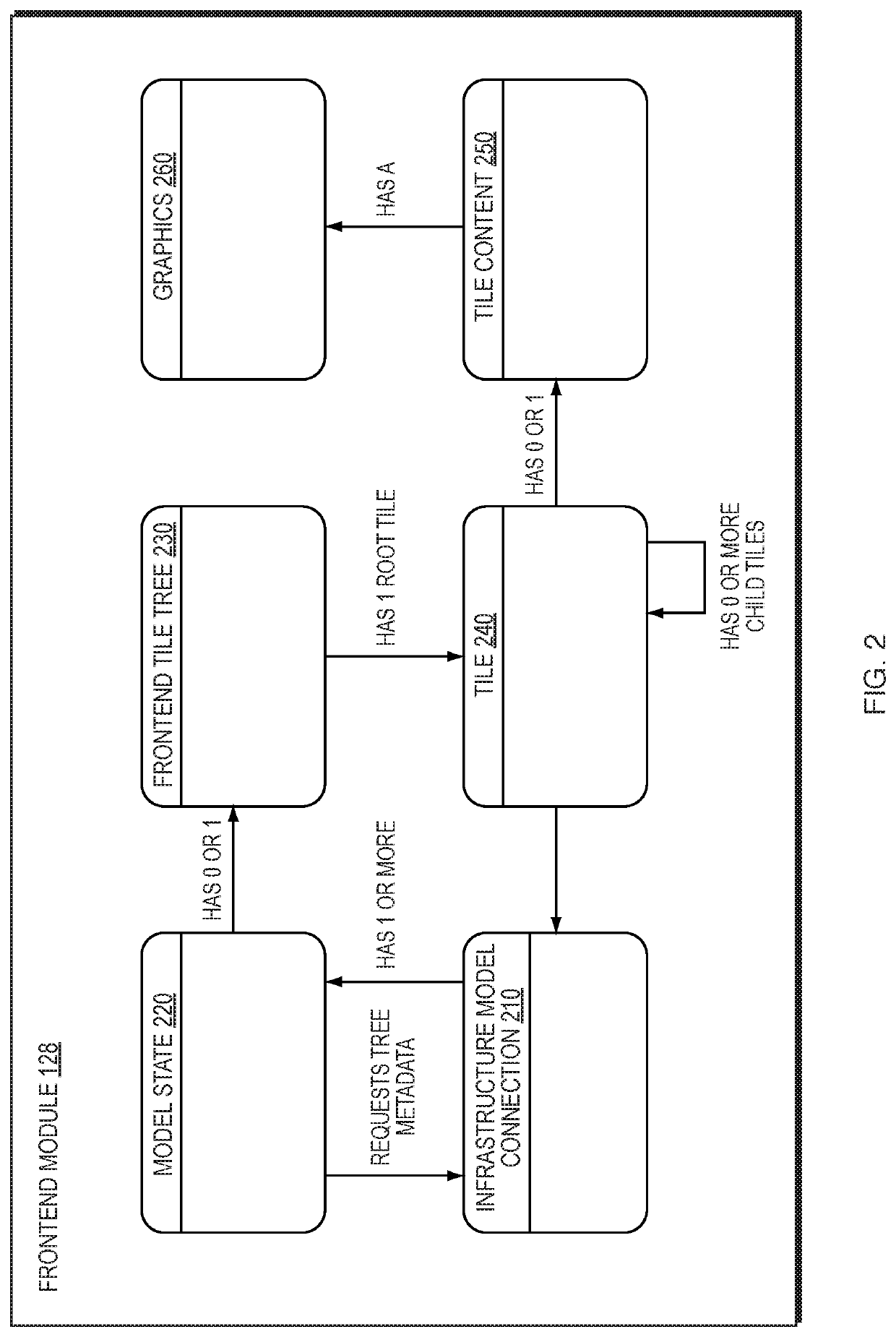Conversion of infrastructure model geometry to a tile format
- Summary
- Abstract
- Description
- Claims
- Application Information
AI Technical Summary
Benefits of technology
Problems solved by technology
Method used
Image
Examples
Embodiment Construction
[0020]FIG. 1A is a high-level block diagram of an example infrastructure modeling software architecture 100. The architecture may be divided into client-side software 110 that executes on one or more computing devices provided local to an end-user (collectively “client devices”) and a cloud-based software 112 that is executed on one or more computing devices provided remote from the end-user (collectively “cloud computing devices”), accessible via a network (e.g., the Internet). The client-side software 110 may include web frontend applications 120 that operate within a virtual environment (e.g., a “browser sandbox”) provided by a web browser 124 (e.g., the Chrome® web browser), and desktop front-end applications 122 that operate directly under an operating system, and backend applications 132 that interact therewith. The cloud-based software 112 may include infrastructure modeling hub services (e.g., iModelHub™ services) 142, other services software 152, 154 and backend application...
PUM
 Login to View More
Login to View More Abstract
Description
Claims
Application Information
 Login to View More
Login to View More - R&D
- Intellectual Property
- Life Sciences
- Materials
- Tech Scout
- Unparalleled Data Quality
- Higher Quality Content
- 60% Fewer Hallucinations
Browse by: Latest US Patents, China's latest patents, Technical Efficacy Thesaurus, Application Domain, Technology Topic, Popular Technical Reports.
© 2025 PatSnap. All rights reserved.Legal|Privacy policy|Modern Slavery Act Transparency Statement|Sitemap|About US| Contact US: help@patsnap.com



